Let’s begin with two misconceptions regarding chard. Swiss chard is not from Switzerland, but the botanist who named it in the nineteenth century was, and named it for his homeland. Second, it is pronounced chard, not shard. I can understand why the mistake can occur. Chardonnay, a wine grape varietal, is referred to in a shorthand kind of way by many people (moi included) as “shard”. The “ch” is pronounced “sh” in French, like chalet. Also a shard is a sharp piece of glass, not something one would consume.
Chard is from the Latin and the French for the word “thistle”. However, chard is not a member of the thistle family but belongs to the beet family. Chard is cultivated for the leaves and stems of the plants, not the roots. It is the cooked green of choice in the summer months in our house. We grow many varieties that are as pretty to look at as they are nutritious for you. Varieties like Rhubarb with its bright red stems and Bright Lights with its neon pink, orange and yellow stems give beautiful accents of color in the garden. Chard is a nutritional powerhouse with vitamins K, A and C, and is a good source of potassium, iron and fiber.
European cooks are partial to chard stems discarding the leafy part and in America most cooks use the leaf and discard the stem. I take advantage of both the stems and the leaves . The tiniest leaves are an interesting addition to salad mixes. When using larger leaves, the stems need to be separated from the leaves to cook both parts correctly. This is a recipe with the gardener in mind. If you don’t grow your own, your local farmer’s market is a good source for chard. Supermarket chard looks sad for the most part and wouldn’t make a chard lover out of anyone.
Swiss Chard with Garlic
Serves 4-6
Ingredients
- 1 large bunch of chard
- Kosher salt and fresh ground pepper
- Low sodium chicken broth
- Extra virgin olive oil
- Several cloves of garlic, peeled and chopped
Directions
- Trim the bottoms of the stems and wash chard in several changes of water
- Cut the stems from the leaves. Chop stems into 1/2 to 1 inch pieces. Cut leaves into 1 to 2 inch ribbons. Stacking leaves on top of leaves and stems in an even row makes the task go quicker.
- Bring a large pot of well-salted water to a boil. Add chard stems and blanch for 4-5 minutes. The timing will depend on how thick you cut the stems and how soft you want them to be. Remove stems from water with a slotted spoon or spider. Add a little more water to the pot if necessary and keep at a boil.
- Add chard leaves in batches and blanch until wilted, 2-3 minutes. Drain in a large colander. Squeeze out excess liquid when cool enough to handle.
- Heat a tablespoon or so of extra virgin olive oil in a large skillet over medium high heat for about a minute. Add stems and toss gently to coat. Add wilted chard leaves and stir often, until tender, adding a little chicken broth if the mixture seems too dry. Push chard to one side of pan, add a little more olive oil, add garlic to pan and saute garlic until golden, another minute or two.
- Serve warm. Cooked chard could be added to a frittata or omelet as well.
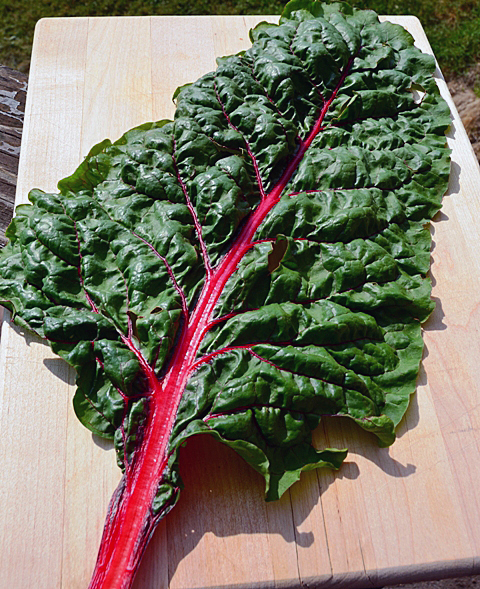
Crinkly rhubarb chard leaf with bright red stem.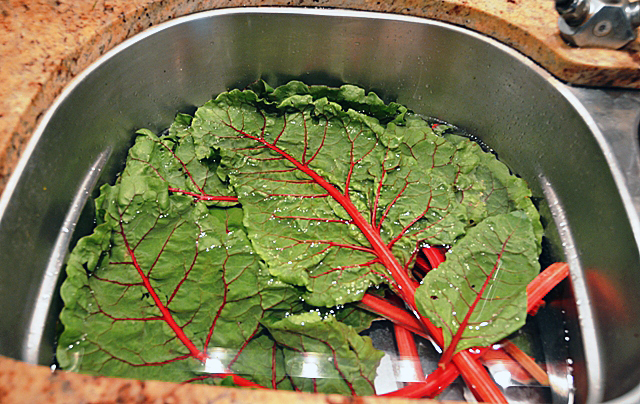
Soak chard leaves in several changes of water. Dirt will sink to the bottom when you lift the leaves out. Drain chard in a colander.
Trim the bottom of the chard leaves. Cut the leaf away from the stalks, I prefer using scissors or a small serrated knife. Chop leaves in 1-2 inch ribbons. Stacking the leaves speeds the process along.
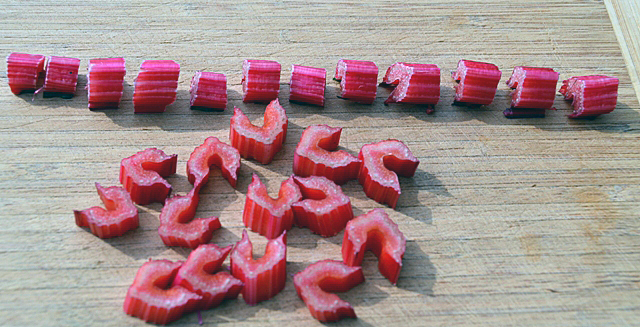
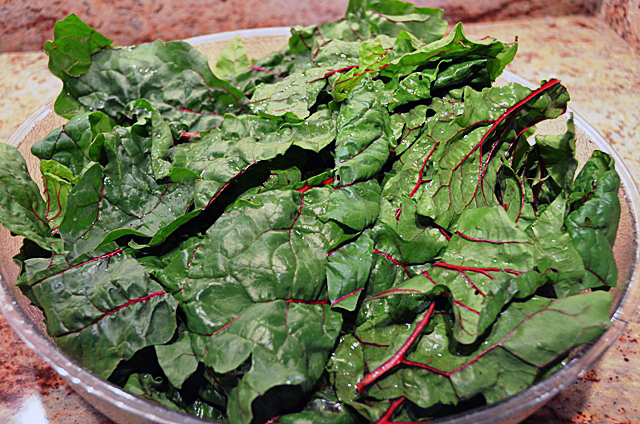
As you can see from the measuring cup, some of the color leaches out during the blanching process but they remain predominately red.
Saute the stems and leaves together and finish with a little chopped garlic. A flavorful extra virgin olive oil will really enhance the flavors in this dish.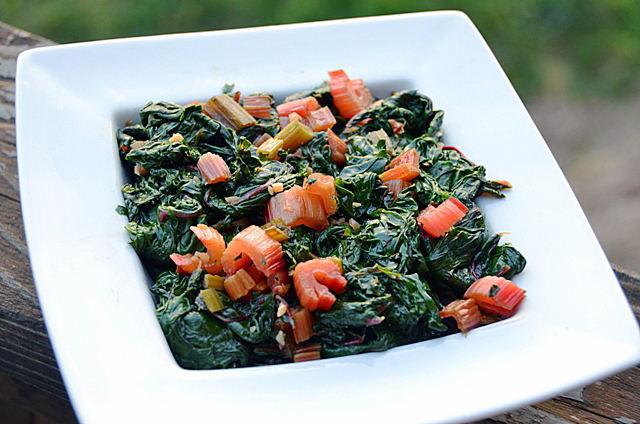
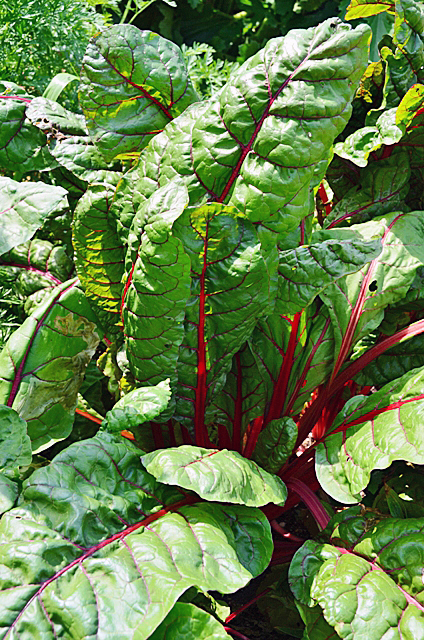
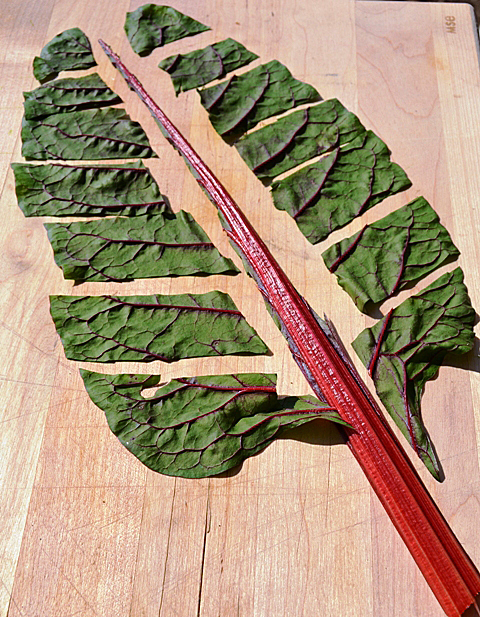
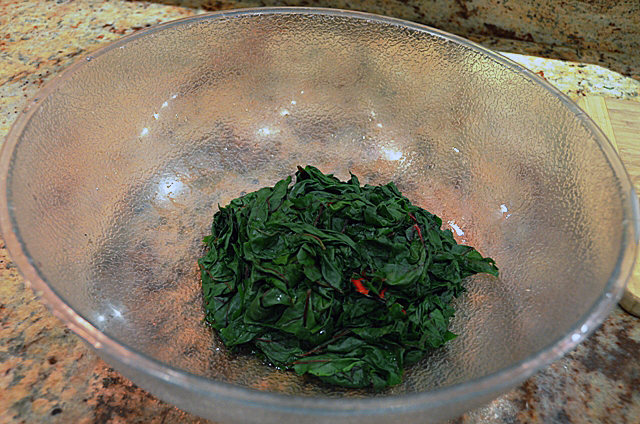
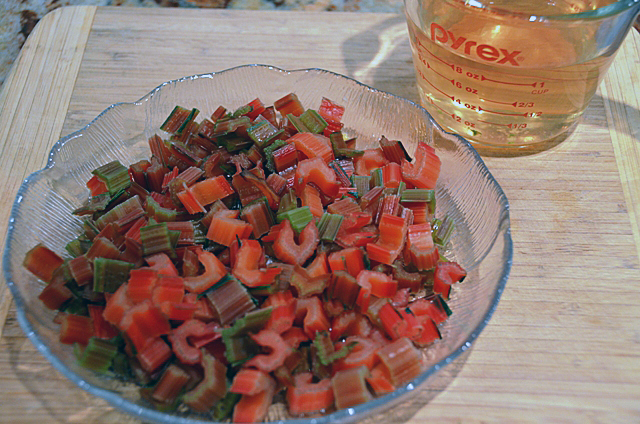
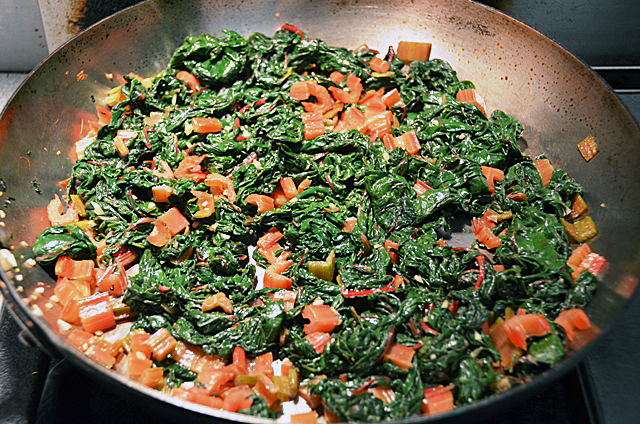
Sounds like something I’d dare to prepare if I see it at a farmer’s market from that recipe. I wonder what it is comparable to — spinach? broccoli? collard greens?
You can use it in recipes that call for spinach, just cook the stems separately, or don’t use them at all.
Phenomenal! Everything … the photos, the recipes.